|
|
 |
The American West |
|
The aim of the journey was to visit in the American West
and more particularly the National Parks. This individual trip organized in
France was a loop from San Francisco. The means of transportation was a car rented
at the airport and returned four weeks later before returning to France.
The trip took place in 1991, from July 31 to August 27.
The report is in six tables. The general comments are given by the
USA presentation. |
|
|
|
|
San Francisco |
|
|
|
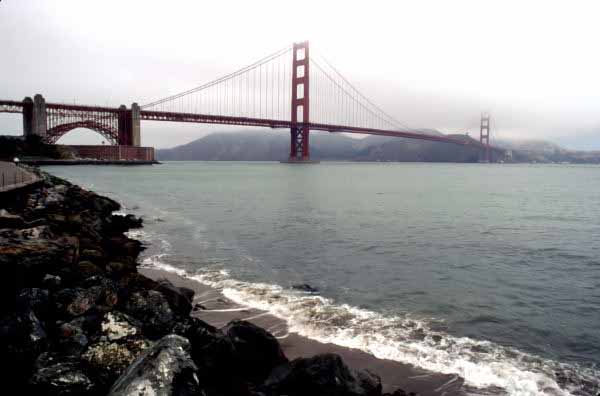 |
|
Golden gate bridge |
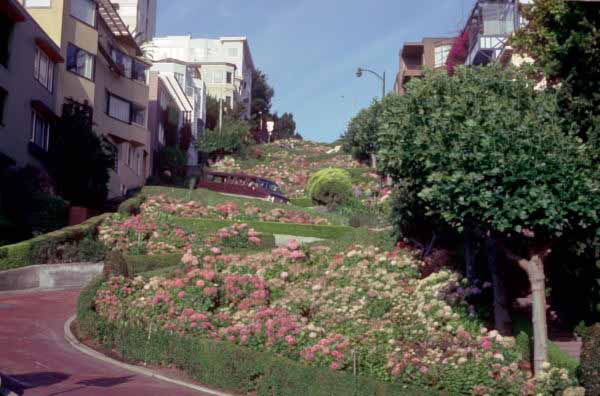 |
|
San Francisco |
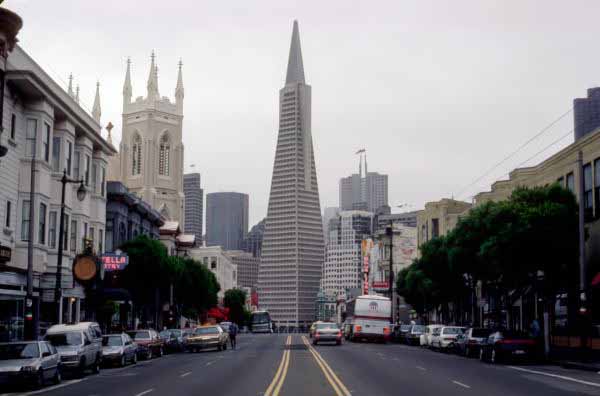 |
|
San Francisco |
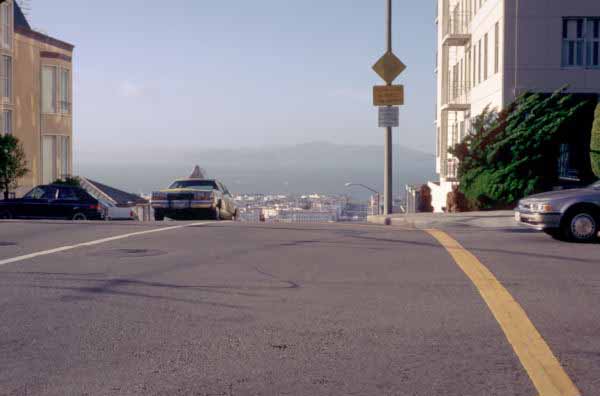 |
|
San Francisco |
|
|
Approach: The Continental Airline flight took 17 hours from
Paris to San Francisco with a 3-hour stop in New York. It took off
at 11:15 am in Paris and landed at 4:23 am (Paris time) at the
international airport of San Francisco. At that time, American
immigration controls were easy. And so was the renting of the car
from Alamo company, the reservation had been made in France.
The hotel was located downtown. It took only two hours since the landing.
San Francisco: The city
and its surroundings were visited twice : two days at the beginning of the
stay and at the end of the tour loop before returning to France.
The city was visited very briefly in 1985 at the time of
a business trip.
The first contact showed an easy motor vehicle traffic but difficult
parking downtown. The first day of visit was
devoted to the tour "scenic drive" which enabled us to visit the
main monuments: California Palace of the Legion, Veterans Building,
Museum of Modern Art, Civic Centre, Union Square...
Beyond the "Golden Gate
bridge": The second day, we crossed over the bridge spanning the
estuary to discover the north of the bay. Our first stop was to explore
Sausalito, the village of trendy residences where artists
find a haven of peace. Then we headed for to Muir Forest
where we admired the giant sequoias dating back to several centuries
before our era. John Muir is considered, with President Roosevelt,
as the inventor of American National Parks.
Road 101 led us from Sonoma to the Napa Valley whose high-quality
wines cause concern to French wine growers. The visit of the Domaine
Chandon was an example of technology transfer from France to the USA.
The return was made over the gigantic Bay Bridge. The day
was completed by the visit of Embacadero and Mission Dolores which
was the first district of Frisco in 1776.
Driving from Yosemite
Park: We went to Berkeley where we visited the
campus. We drove along the road to the port
then we moved to the Castro, Nob Hill, SoMa - South Market -, and
Fisherman' S Warf districts. We attended the projection of the film
"San Francisco Experience", a picture wall by several
tens of slide projectors.
The last day: The morning
was a long walk in downtown, Chinatown, the visit of the
"Cable Bus" Museum and Union Square. The afternoon was
dedicated to the Asia Museum and the Haight-Ashbury district |
|
|
|
|
|
|
|
|
San Francisco is the most extravagant city in the USA, because of its
localization on a peninsula 50 km long, its steep streets
offering an exceptional sight on the bay, its typical districts
like Mission and Castro.
Though turned to the Pacific Ocean and Asia, it may be
the most European of American cities.
|
|
|
|
|
The American West Coast |
|
|
|
|
Approach: The circuit started on the road from San Francisco to Los Angeles.
High-Tech Valleys: Road 82
carried us to San Jose then to the Campus of Stanford university.
The Silicon Valley is the land of, "Money Makers".
Road 101 led us as far as Monterey. The city is an important fishing harbour
with canneries.
Scenic drive: From Monterey
to San Luis Obispo, we followed the coastal road between the sea and the
Santa Lucia Range passing through the town of Carmel, where we visited
H. Milller's house then the escarpments of Big Sur, by the 17-mile toll road,
a private property. The landscape looks like the French Breton coasts.
Hearst Castle: To visit the site,
it was advisable to phone to reserve for an organized tour.
This building is a megalomaniac dream of a newspaper tycoon in search of his roots.
It was used primarily for sumptuous receptions and the shooting of the film
"Citizen Kane" with Orson Welles.
The construction started in 1919. The main buildings are: Casa Grande, The Gardens of
La Cuesta Encantada, Neptune Pool and the Main House. The most extravagant is
"The refectory" which recalls the extravagances of Ludwig II of Bavaria. |
|
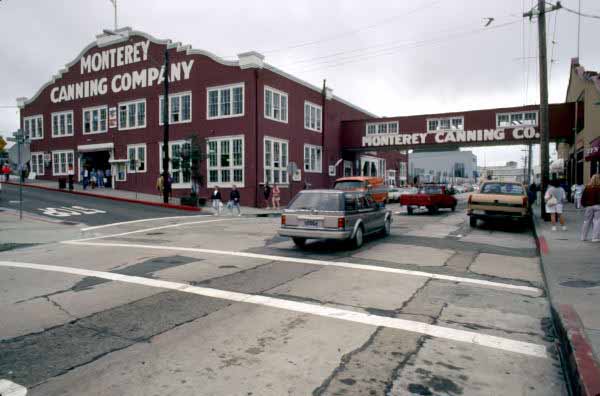 |
|
Monterey |
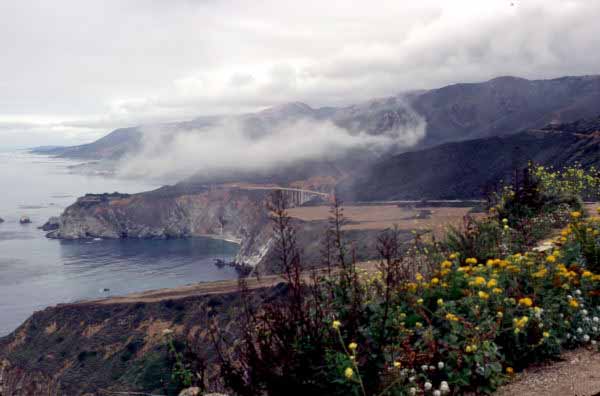 |
|
Scenic drive |
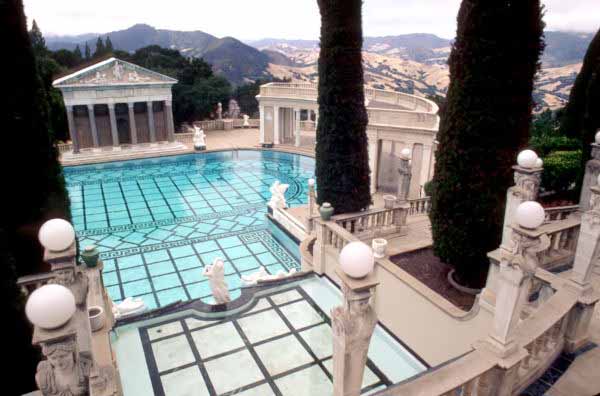 |
|
Hearst castle |
|
|
|
|
|
|
American roads have no interest, they are monotonous long straight lines
crossing villages scattered among vast sceneries. Something happened to me:
I was stopped by the police because I was on a right turn lane.
Unfortunately I continued straight on because such was my destination, I thus crossed a continuous
white line. A police officer in his car caught me with revolving light and sirens.
A tall police officer got out of his car. I thought I was going to get a ticket.
But he was magnanimous for a "Frenchie".
|
|
|
|
|
Los Angeles |
|
|
|
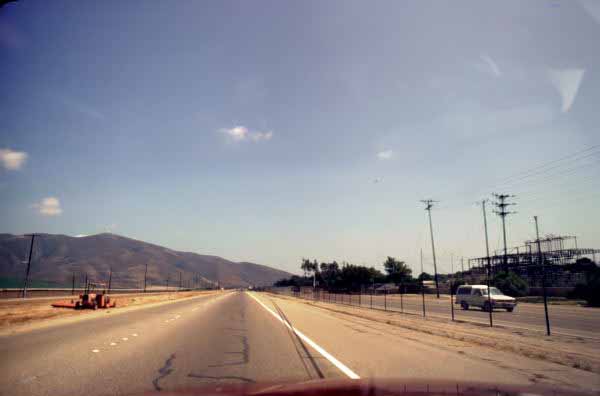 |
|
Scenery |
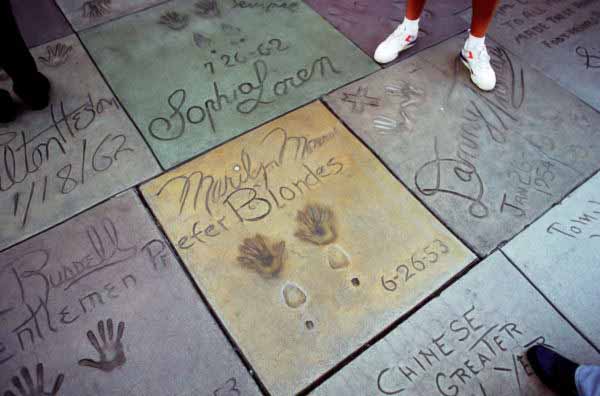 |
|
Los Angeles |
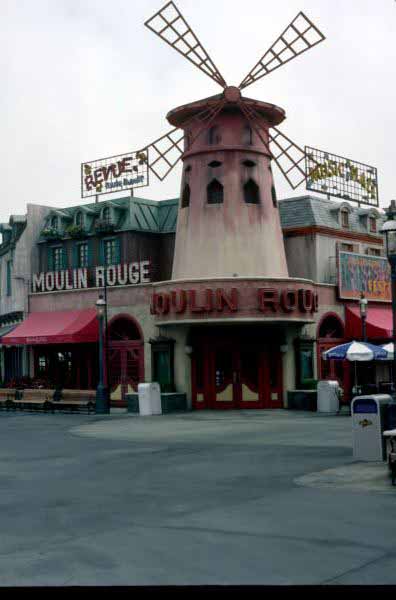 |
|
Universal Studio |
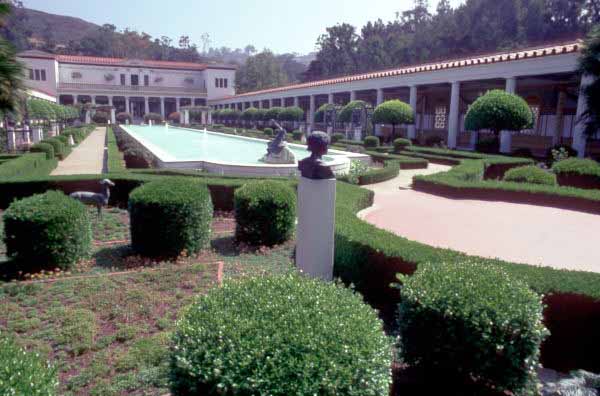 |
|
J. Paul Getty |
|
|
Approach: The
way from San Luis Obispo to Los Angeles is fwy 101 (freeway).
The first part as far as Santa Barbara had little interest.
From there, the coastal road runs through cities which American
series made famous - soap operas- Indeed the
landscape is splendid. Cliffs and beaches look like "a Californian
Mediterranean coast".
Santa Barbara: The most artificial of the
coastal cities has a "Mission" in a pretty park.
The construction dates back to 1786. The church is remarkable with its
two bell-towers on both sides of a facade of pre-Christian Roman temple style.
Ventura: The city is also a "Mission" San Benaventura
dating back to 1782.
Malibu: It is one of the rare unpolluted beaches, due to the TV series.
Venice Beach: The beach is the privileged place of
body-builders with oiled muscles.
All these cities are truer than the TV series.
Except for beach sport fans, their only interest is to be a
microcosm representative of the American dream.
Los Angeles: Driving into the city was not
fun because of the dense network of roads and streets.
We looked for an hotel on foot! We discovered it around
6 p.m.. Its swimming pool was welcome.
Two days were devoted to visiting about fifty districts in search
of their identity.
The highlights of the first day were:
- The morning spent at the "Universal Studios" to see
movie sets and special effects.
- The Griffith Park and the observatory made famous by James Dean's
film
-Rebel Without a Cause-.
- The Stack - stacking of motorways -, Bayle Heights -the Mexican district-
and a detour to Hard Rock Cafe.
The second day was devoted to:
- The J Paul Getty museum located outside LA at the "17985
Pacific Coast Highway". The building is the reconstitution of an
ancient Roman villa - Villa dei Papiri- of the 1st century of our
era, decorated with gardens. The collections are remarkable.
- The visit of the Watts District which had been in the news a few years before.
- In the later afternoon, Beverly Hill -its sumptuous villas- and Sunset Bld
-its pavement-.
|
|
|
|
|
|
Road 101 from Sonoma to San Diego is the road of the "Missions".
"El Camino Real" has still 21 "Missions" representative of the
Spanish ecclesiastical art from 1769 to 1823. Some of them are genuine museums in exceptional
gardens. Their visit requires an effort of imagination to replace them in the context
of the Spanish conquest.
|
|
|
|
|
The parks I |
|
|
|
|
Approach:
From LA, we visited Disney World -Magic Kingdom-.
Some attractions are interesting. In particular a
film about China projected by nine cameras. Then, to reach our first
stage, we had to drive more than 320 miles on a
monotonous and endless road. It was our quotient, we drove
approximately 3,900 miles to reach Frisco, the end of our trip.
The sites visited are mentioned chronologically:
-The Petrified forest: The Petrified Forest National
Park is part of the Painted Desert National Historic Landmark .
Like all American parks, it is very didactic. The tree fossils and
the colours of the desert are a visual enchantment.
- The Grand Canyon: The first contact took place around 6 p.m.,
the sight was exceptional, imposing. One day of visit was occupied
by an overflight by helicopter, it was my birthday, and by a walk
on the Canyon Rim Nature Trail , western and eastern side.
-National Navajo Monument: At Page, we visited the Marina and
made a boat tour on Powell Lake to admire Rainbow bridge. Then, we drove
towards the park, an Indian reservation, and the village Anasazi
Betatakin, hidden under a rock vault.
-Monument Valley: Needless to describe the park so many films have been shot there.
The tour, on a dirt road between the "monuments",
is strictly controlled, it is impossible to get out of the way. Each monument bears a name.
The spectacle is unforgettable.
-Natural Bridges: The park has the most beautiful bridges dug
by rivers in a very old rock.
-Blanding: The city of the Mormons is located in Utah.
-Hovenweep: This small park has "Pueblo" ruins in a valley
located in a desert.
-Canyon of Chelly: This canyon has human size unlike its
prestigious neighbours. It is narrow and the river waters
sheep pastures. The walk on the "White house trail" allowed
to visit troglodyte houses dug in cliffs. |
|
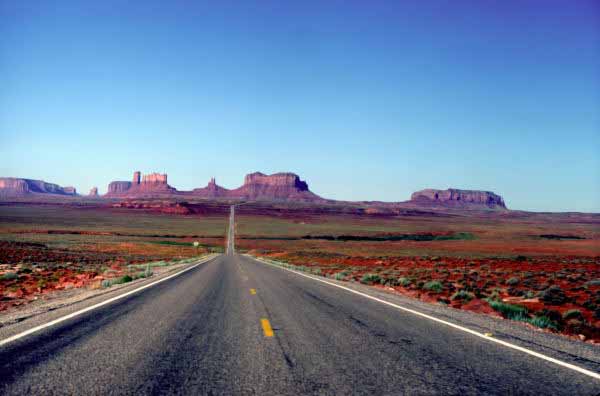 |
|
Scenery |
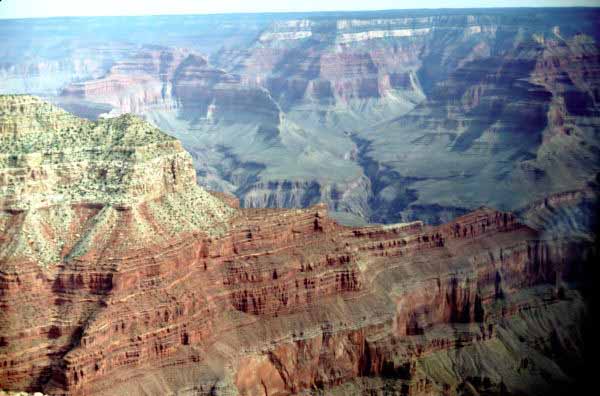 |
|
Grand Canyon |
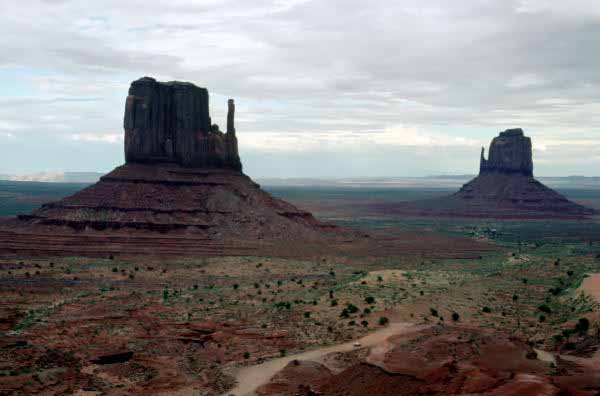 |
|
Monument Valley |
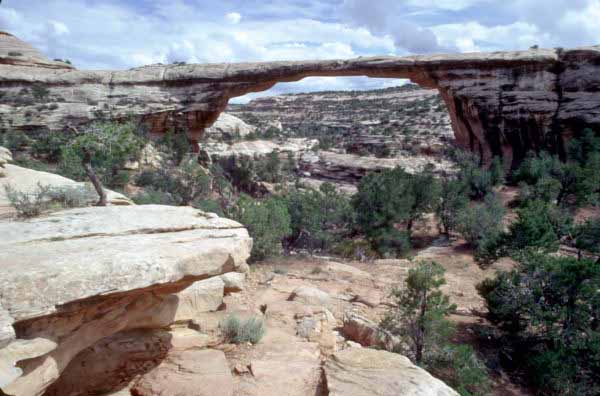 |
|
Natural Bridges |
|
|
|
|
|
|
American National Parks are managed by the National Park Service -NPS-
which delivers a "pass" for seven consecutive days or for a year.
The organization is remarkable for the documentation available as well as
for the supervision. Rangers are kind, but inflexible
on the respect of rules and the cleanliness of the sites.
The speed limit is 65 ml/h on highways, but powerful trucks run
at much higher speed. Truck men use CB's to avoid controls.
On the road, a truck passed us and the tread of one of its back tires
came off and flow over the top of our car! |
|
|
|
|
The parks II |
|
|
|
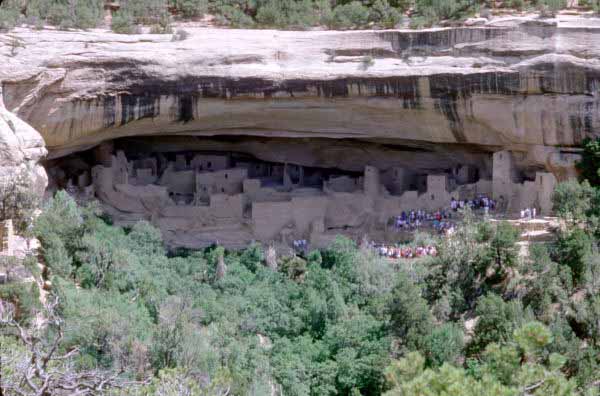 |
|
Mesa Verde |
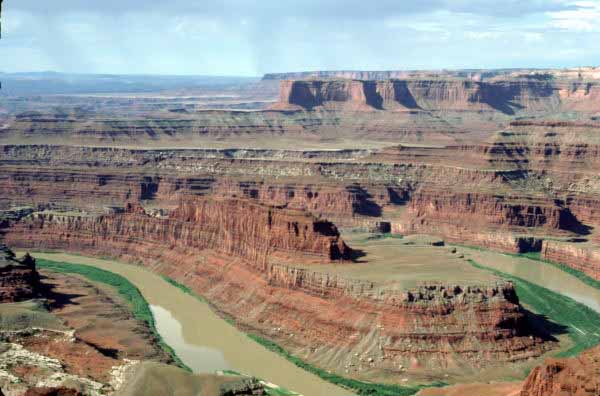 |
|
Canyonland |
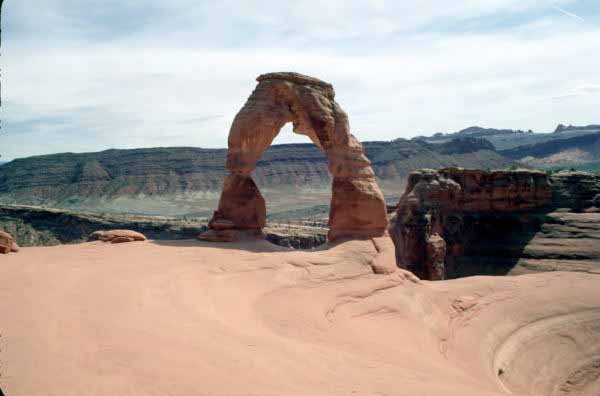 |
|
Arches National Park |
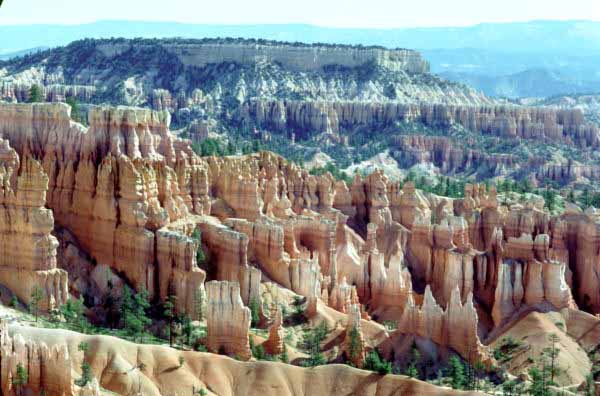 |
|
Brice Canyon |
|
|
Approach: Road
160 to Mesa Verde crosses "the Four Corners", rectangular
border of four States: Colorado, Utah, Arizona, New Mexico.
The most amazing sites are mentioned chronologically:
-Mesa Verde: The park has hundreds of
houses built by Anasazi Indians between the 6th and the 12th century.
The city was a large metropolis with an estimate of +5,000 inhabitants.
The park is the place elected by the Mesa Verde Fish Hook Cactus.
From Moab, the trip followed the septentrional bank of the Colorado
river westwards.
-Canyonland: One of the vastest parks of the area. The park is
an ecosystem, the soil consists of micro-organisms and macro-organisms
which develop with the first drops of rain into sumptuous plants.
The ground of the desert is a "cryptobiotic soil".
-Dead horses point is the most exceptional point of view on Canyonland,
the spectacle is an enchantment colours, a horizontal stratification
of various nuances of ochre.
-Arches National Park: It has approximately 1,500 arches. The most
dramatic are: Window, Devil, Delicate.
-Capitol reef: The long park is immense. The "scenic
drive" allows to admire the Egyption Temple and the Golden Throne.
-Brice canyon: The monuments of the park are among the most
delicately engraved by nature. The colours under a low angle light,
at sunrise as well as at sunset, are exceptional. The
walks on the Navojo Loop Trail and Peekaboo Trail are an enchantment.
Our lodge looked south on to the park.
-National Zion Park: The name is an old Hebrew word meaning
: refuge, sanctuary. The way follows the river and from
"the Temple of Sinawava", it is necessary to walk in the water! |
|
|
|
|
|
In the terminology of American parks, an "Arch" has been
excavated by wind erosion, and a "Bridge" has been
dug by water erosion.
The Anasazi Indians left rupestral engravings on the rocks and cliffs:
Petroglyphs, by removing part of the rock with "chisels" and
Pictographs, by applying pigments to the rock. Everywhere in the
world, old civilizations marked their passage with rupestral art
in the Andes, the Sahara and elsewhere.
|
|
|
|
|
The parks III |
|
|
|
|
Approach: After
a one half-day visit of National Zion Park, we headed for
Las Vegas where we arrived around 4 p.m..
Las Vegas: Everything has been said about it. It is
disproportion, ate, excessive and represents American's components:
business, dream, escape. Its reputation is well deserved
and efforts are made to pick up new markets, families with children!
The centre of games and pleasures is on the "Strip", Las Vegas bld.
Buildings are extravagant beyond imagination!
The astonishing sites are mentioned chronologically:
-Death Valley National Park: The valley deserves its name
which comes from the many "pioneers" who died during the conquest
of the west. The panorama from Dantes View, +1,669 m high, to
Badwater, -86m deep, is among the most dazzling.
In the background of the Devil's Golf Course, the perpetual snows of
Mount Whitney magnificently contrast with "the Artists Palette",
an amphitheatre of all colours. Many one-way roads allow visitors to
drive from one point to another.
Our evening stage was at Furnace Creek Ranch.
-National Yosemite Park: This park close to San Francisco is
the paradise of hikers and family holidays. It is located in
the Sierra Nevada with summits +4.000m high.
The park is famous for its waterfalls. Two days were spent walking on
Vernal & Nevada Fall Trails.
These walks were an absolute delight.
On the road to Frisco: The stay in the American West
was drawing to a close. We took again the road to San Francisco whose
visit was described with that at beginning of the stay.
-Jamestown, Railtown 1897 State Historic Park: It is America's
last authentic roundhouse. The locomotives and cars have appeared in over 200 films.
-Sonora: Founded by Mexican miners, the city was the biggest, richest
and roughest of the cities exploiting California's gold.
-Columbia State Historic Park: The gold rush to Columbia began in March 1850.
The park has the best preserved gold rush town in all California. |
|
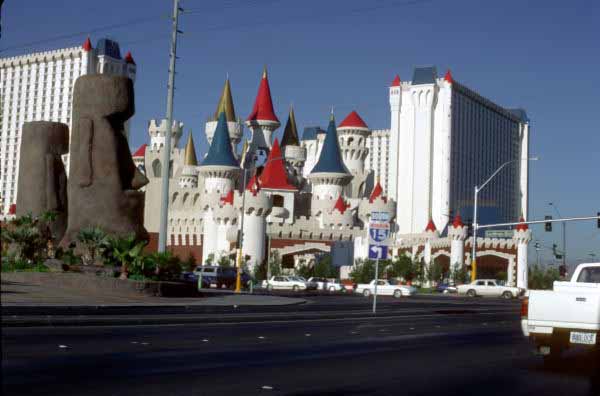 |
|
Las Vegas |
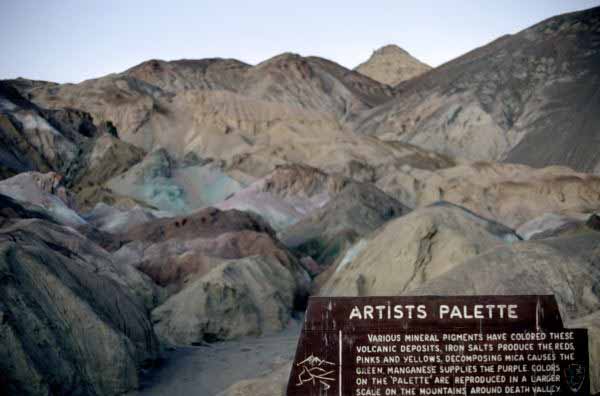 |
|
Death Valley |
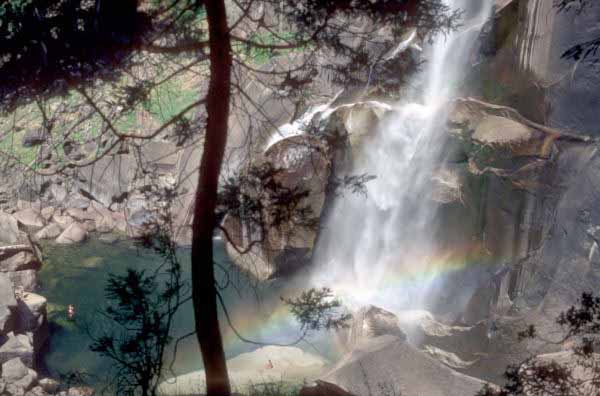 |
|
Yosemite National Park |
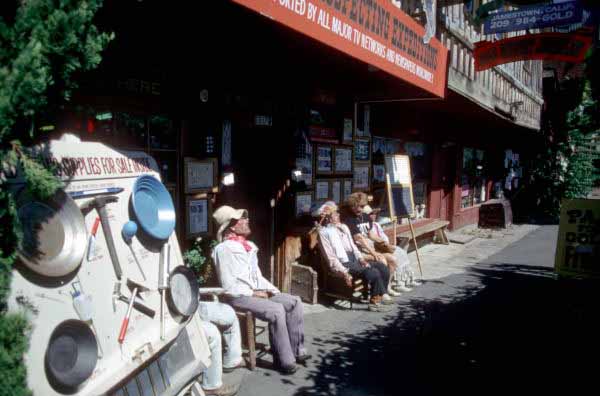 |
|
Columbia State Historic Park |
|
|
|
|
|
|
The visit of the National Parks was the discovery of the exceptional nature of the
north American continent.
Let us be grateful to the American people for taking
the right measures to preserve these natural beauties very early.
About the cities, I will particularly remember San Francisco and
the "Missions" on road 101.
|
|
|
|
|
The return to France was made by a Continental Airline flight via New York. |
|
|
|
| Neuilly, le 2004/02/22 |
|
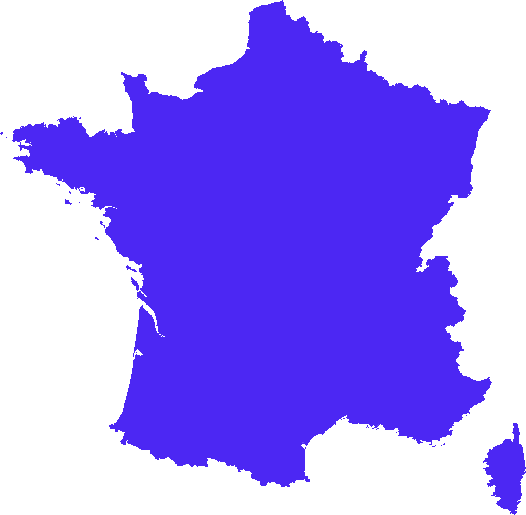
|
|
|
|
|